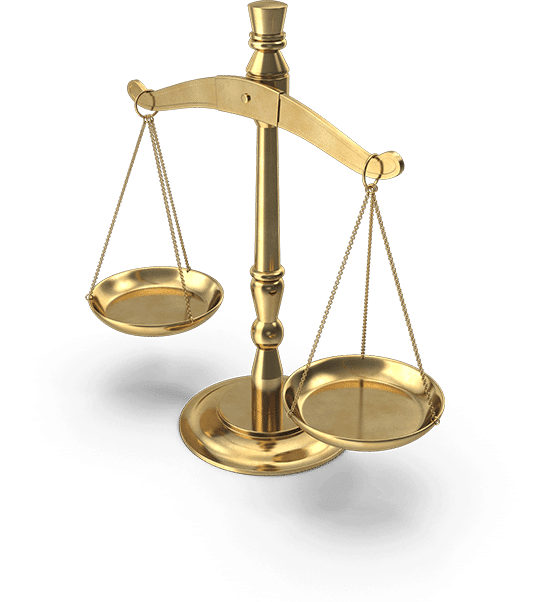Philippine Trademarks: Benefits, Rights, Registration and Maintenance
This article provides an overview of Philippine Trademarks.
We’ll discuss:
- What is a Philippine Trademark?
- What can be registered as a Philippine Trademark and levels of distinctness
- Benefits and rights of a Philippine Trademark Owner
- Step by step process of registering a Philippine Trademark
- How to Maintain a Philippine Trademark through the Declaration of Actual User
Let’s jump right in.
What is a Trademark in the Philippines?
A trademark is any visible sign that distinguishes the goods or services of an enterprise from those of other enterprises.
A trademark might be taken to mean any symbol, sign, or word distinguishing a good or a service.
However, a trademark is actually a particular type of “Mark” that denotes marks of a good.
On the other hand, a service mark is a mark used by enterprises to differentiate the type or kind of services they provide to other enterprises.
Lastly, a trade name can also designate, identify, or distinguish an enterprise from other enterprises.
What can be registered as a mark in the Philippines?
A Mark can be registered based on its composition
There are several ways that you can create and use a mark based on its composition.
The first is a word.
By the word itself in combination with letters and numbers or a particular font can be registered as a mark.
One example of this is the word “McDonald’s”.
When people read the word McDonald’s they can already associate this mark with the fast food chains known throughout the globe.
The second is a symbol.
A symbol is the use of an image, character, or anything that is not a word or a number that can be registered as a mark.
A good example is the “Check” or the “Swoosh” mark used by the footwear brand Nike.
A set of letters or numbers that do not form a word also falls under this category.
For example, ABS-CBN is a known broadcasting company. The use of the name “ABS-CBN” is composed of letters but does not form a word and acts more as a symbol.
The third is an image.
An image is the use of a picture, visual representation, or other representation of a person, a thing, or another idea commonly depicted through drawing or art.
Let’s use Jollibee as an example.
One of the marks of this very popular Philippine fast food chain is the head of the very famous bee wearing a chef’s hat while wearing that big smile.
Marks can also be a combination of all three.
An example of a combination mark is the convenience store 7-11. The mark of this service is shown by the use of the number “7” as the background with the number “eleven” written in words.
Another type of mark that can be registered are the taglines of a business.
Taglines are slogans or catchphrases that are used by enterprises to promote their product.
The tagline of BDO “We Find Ways” is a good example as it is simple and catchy enough that is easily remembered.
The last example of a mark that can be the subject of a trademark is the 3D figure or design.
A 3D figure or design is a type of mark that consists of three-dimensional shapes, or any combination thereof, or any combination thereof with two-dimensional trademarks such as characters and figures.
MC 2023-001 of the Intellectual Property Office of the Philippines included 3D figures or designs as one of those considered non-traditional visual marks.
This Circular also recognizes 3D marks as long as the marks portray an acquired distinctiveness as defined under the IP code.
A Mark can be registered based on its Distinctiveness
A distinct mark can be registered as long as it is unique or distinct.
Its uniqueness or distinctiveness is important.
If your Mark is distinct or unique, its registrability will greatly increase.
However, if the Mark you intend to register is a mark that is common or generic, you may risk having your registration denied for this reason. There are levels of distinctiveness in marks, and let’s discuss them by first starting with the most generic.
A generic or common word is very indistinct.
Take as an example a barbershop trying to register the mark “Barbero”.
This is a very common or generic word – it is likely to be denied.
A descriptive mark that describes the product might be a little better but still it must be distinct for the mark to be registered.
For example, a milk tea shop with a descriptive mark called “Cold Drinks”.
In this instance, the mark might still be denied registration since cold drinks are common not just to milk tea but all other sorts of refreshments.
A suggestive mark is a mark where the product or service is connected or related to the mark but the mark itself is not entirely descriptive – this is better and more distinct and has a better chance of being registered.
A good example of this is Mang Inasal.
This is a famous fast-food chain in the country that provides grilled chicken and pork products.
Inasal means to grill and is thus related to its food products but the addition of “Mang” makes it not entirely descriptive and thus more unique.
An arbitrary mark is the use of a mark to describe or promote a product that is not related to the goods or services. This has a much higher chance of being accepted for registration by the IPOPH.
Everyone is aware of the famous gadget or technology being offered by Apple which has the mark of an “apple” with a bite on the top-right part of the “apple”.
However, although the corporation is and the mark is an “Apple”, they sell gadgets and not agricultural products.
These gadgets range from mobile phones, MacBooks, and even smartwatches.
People don’t go to an Apple store to buy any apple products but gadgets.
The last and strongest classification are the coined or fanciful marks.
These are marks that were made up or invented by the entity or enterprise that wants to use and register the mark.
One example of this is the messaging app “Viber”.
The word “Viber” is not a word. The word was made up by the developers who invented this online messaging platform.
A coined or fanciful mark has the highest level of distinctiveness and is thus most likely to be registered by the IPOPH.
What are the benefits of registering a Trademark in the Philippines?
The main benefit to having a trademark in the Philippines is brand building and customer loyalty.
A customer can easily identify which brand to buy among other options when you have a distinct and well-known mark.
Most products available to the public are offered by multiple enterprises.
Having an easily identifiable trademark makes it easier for customers to identify you as a distinct choice among all the others.
Additionally, your trademark can help build brand awareness.
As a distinct choice in the marketplace, brand awareness and recall is built when people choose your product and then return to it because they liked it.
This builds brand recall and is best helped with the use of a mark.
Another benefit of having a Philippine trademark is being able to better advertise your products.
Having a mark helps in advertising your product and brand.
When you have a mark and use that throughout your marketing materials and ads, it is easier to advertise your products when compared with unbranded products.
For example, think of Apple and Samsung products compared with knock-offs.
The Mark in itself helps advertise your company and products.
Naturally, all of this will help establish your company’s image and reputation as brand recall is built and is linked to quality.
What are the rights trademark registration in the Philippines?
The owner of a mark duly registered has several rights over the mark that deal with the right to use, license or legally defend the mark in Philippine courts.
Only the owner of a registered mark has the right to use the mark – and can take to court those who violate this right.
Take the case of Starbucks against Cafe de Manila.
Starbucks filed an opposition for the registration of the word “Frap” by Cafe de Manila.
Starbucks argued that the word “Frap” is synonymous with its registered mark “Frappucino” and that its customers even use the word “Frap” when referring to the Frappuccino products.
IPOPHL, through its Bureau of Trademark, sided with Starbucks.
The Bureau took note of the fact that at the time Cafe de Manila filed for the registration of “Frap”, Starbucks already registered the mark on “Frappuccino” in the Philippines.
The Bureau decided that the registration and use of the word “Frap” by Cafe de Manila would constitute confusion and deception among the public.
The Bureau further emphasized this by citing the case of McDonald’s Corporation v. Macjoy Fastfood Corporation, G.R. No. 166115, Feb. 2, 2007, when it stated that if a registration is almost the same or very closely related to a mark registered by another, the application must be rejected.
What do you do when there is trademark infringement?
You can protect your rights to a trademark by filing in the courts – but the mark must have been registered with the IPOPH as well as updated.
The case of McDonald’s v. Macjoy above stated provides the importance of registering a mark.
The case says that a mark is valid if it is distinctive and hence not barred from registration under the Trademark Law. However, once registered, not only the mark’s validity but also the registrant’s ownership thereof is prima facie presumed.
What is the process to register a Philippine trademark?
You may register your mark with the IPOPHL or through Madrid Protocol.
Registration with IPOPHL is the local registration while registration through the Madrid Protocol is the international registration.
If you use local registration, your protection is only with the local territory.
If you register through Madrid protocol, your registration is recognized by all member parties of that convention.
Let’s discuss the step by step process to registering your mark locally.
a. Make a TM Search
Go to the IPOPHL website.
Then go to Trademark.
Trademark Search is helpful if you intend to register a mark and check if the mark you intend to register is still available.
You are required to change your mark if it is already registered or if it is similar to the one that is registered.
Otherwise, you can proceed with your application.
b. File online through eTMfile using the IPOPHIL website.
You must fill in the necessary information in relation to the mark you wish to register.
Make sure that you are aware of the details of the mark you want to register .
Knowing the color code of the mark is also required if you want to register the color.
c. Pay online through the means allowed by IPOPHIL.
Once you finish with the application, you will be directed to a page where you can pay online or through Bayad Services.
d. Examination of your application by the Bureau of Trademarks.
The Philippine Bureau of Trademarks examiner will go over your application.
You will receive an email that will require you to proceed with the next step.
e. You will receive a Registrability Report.
This provides for issues to be determined by the examiner if any. The applicant needs to respond and satisfy the concern of the examiner.
This is the bottleneck of the process which can take a lot of time in filing a Philippine trademark because of the back-and-forth between the applicant and the Bureau.
f. First publication
IPOPHL will publish your application with their bulletin and will wait if there is opposition within thirty days of its publication.
If with opposition, the application will be handled Bureau of Legal Affairs.
If your application is allowed, you may proceed with the next step.
If denied, you need to register again with a mark that should be registerable and not yet registered with the IPOPHL.
g. If no opposition the mark is now for registration.
You will receive an email in relation to the registration. However, you are still required to complete the Second publication before the Certificate will be released to you.
h. Second publication.
This is more of a formality and will only inform the public that you will be issued a certificate of registration in relation to the mark you registered.
The whole process will take IPOPHL more or less five (5) months from the date of the application, unless, there is an opposition or issues were found.
If there is an opposition or issues, then this adds up to the length of time.
How long is the mark protected by the Philippine trademark registration process?
The mark is protected for ten years from the date of registration and is renewable for every ten years.
How to maintain your Philippine trademark?
The protection may be in perpetuity if the mark registration is being maintained properly.
You can do this by complying with the Declaration of Actual Use requirement by the IPOPHL.
A Declaration of Actual Use (DAU) is to be submitted to IPOPHL according to the following schedule:
- Within three (3) years from the filing of the trademark application.
- Within one (1) year from the fifth (5th) anniversary of the registration of the mark.
- As per Rule 204 of IPOPHL MC No. 17-010, a DAU must be submitted for renewed registrations within one (1) year from the date of renewal of the registration. This requirement only applies to registered marks due for renewal on 01 January 2017 and onwards, regardless of the filing date of the Request for Renewal.
See our post on the Declaration of Actual Use for more details.
What is the proof of actual use with regard to Philippine trademarks?
Proof of actual use is provided by the Trademark Law as follows:
- labels of the mark as these are used;
- downloaded pages from the website
- photographs (including digital photographs printed on ordinary paper) of goods
- bearing marks as these are actually used or of the stamped or marked container
- of goods and of the establishment/s where the services are being rendered;
- brochures or advertising materials
- receipts or invoices of sale of the goods or services rendered
- copies of contracts for services showing the use of the mark.
Where to file DAU maintenance for Philippine trademarks?
First, the form that you need to fill up and submit before the IPOPHL to comply with the DAU maintenance requirement is accessible from their website.
From their website, just go to downloadable forms and click under Trademark “Declaration of Actual Use”.
Next, is the filing.
Once accomplished, you can file the application form through eDocFile which you can access under Trademark.
This is one of the modes that you can access by clicking “TM Online Tools” from the main page of Trademark.






0 Comments